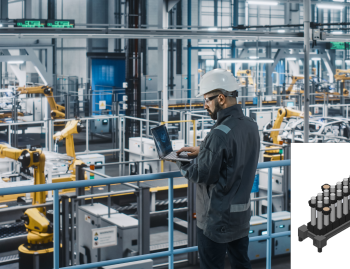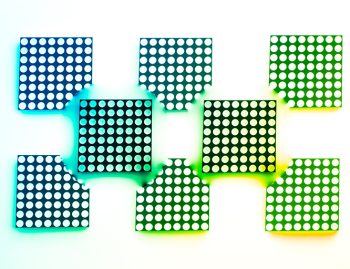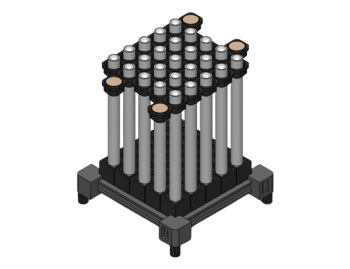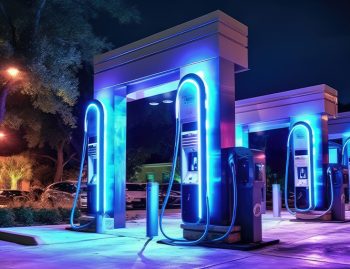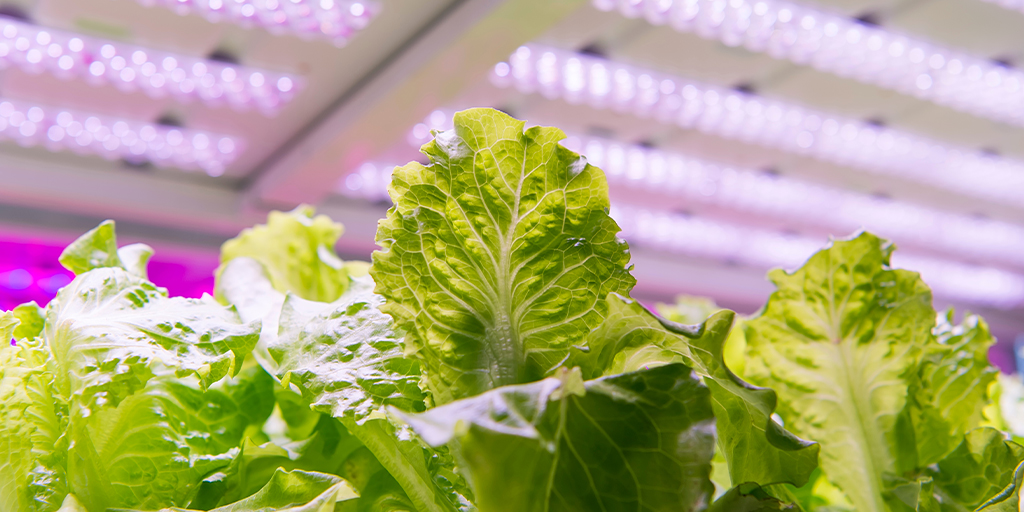
Vertical farming has emerged as a viable solution for sustainable food production, demonstrating a new approach to agriculture that can maximize crop yields in limited urban spaces. This optimization of course is a result of sensors, data collection and analysis, and model-driven automation.
In this post, we’ll take a glimpse at new developments in vertical farming, focusing on the role of LEDs (Light-Emitting Diodes) and new anti-light-bleed technology in creating the necessary infrastructure for a successful operation.
Controlled Environment Agriculture (CEA)
At the heart of a state-of-the-art vertical farm lies Controlled Environment Agriculture (CEA). CEA utilizes precise control over environmental factors such as temperature, humidity, CO2 levels, and lighting to optimize plant growth. The vertical farm's infrastructure is purposefully designed to mimic natural conditions while removing adverse or unpredictable environmental events. The targeted outcome is arguably more operationally efficient than traditional farming, with year-round cultivation of crops with less waste and for lower input costs.
LEDs for Plants
Illumination plays a vital role in vertical farming, providing energy for photosynthesis in the absence of natural sunlight. LEDs have emerged as the preferred illumination technology due to their energy efficiency, longevity, and spectral controllability. LED fixtures, strategically positioned within the vertical farm, provide the necessary light spectrum for each growth stage of the plants. By fine-tuning the light spectrum, intensity, and duration, growers can optimize plant growth, accelerate crop cycles, and improve overall yield.
Recent research at Purdue University found better LED light distribution may be the next boost for indoor crop performance, demonstrating improvement in almost every metric — biomass, energy usage, volume of leaf litter, and yield of usable produce — compared to the same conditions using standard overhead lighting.
These experiments suggest future innovation lies in closely controlling the distribution, quality, and magnitude of illumination. Just as water, heat, and fertilizer are dispensed in vertical farms in optimized quantities, illumination too can be conserved and directed with precision for the most impact on growth.
For more on the research see the video below or, for a more detailed account of testing so far, this presentation.
Light Pipes: Optimizing Illumination Distribution
Light pipes are transparent or translucent tubes or rods that guide and distribute light from LEDs. In electronic devices, this allows indicators on control panels to be positioned a significant distance from the board-mounted LED components, all while maintaining clear, isolated wavelengths.
While using light pipes to direct illumination for photosynthesis remains a potential development, there are plenty of current uses of LEDs within indoor agriculture to convey vital data. Just as vertical farms can be considered factories that make plants, they include the same electronic infrastructure used in automated industrial facilities: data-streaming sensors for temperature, humidity, and programmable timers, and monitors of energy and other resource usage.
For product developers in this rapidly growing and innovative space, new products demand both clarity and resistance to the environmental conditions of the indoor farm.

The Role of Light Pipes in Vertical Farming
A light pipe provides the optimal way to display information on electronic device functions such as power, Wi-Fi connectivity, and operation status. Light pipes developed by Bivar eliminate the problem of light bleed from adjacent LED sources. Light bleed causes false readings, muted and blended colors, and unwanted glow in the indicator enclosure.
Both flexible and rigid light pipes are suitable for these user interface (UI) applications in a range of sizes and topologies for precision fit. Light pipe arrays group all LEDs on a board together, even though their display may be distributed to many sides of a device. Modular arrays give product developers 40% more board space and greater layout flexibility for their designs.

Electronic Design Details
Inside the conditions of cultivation, light pipes aid electronics in other respects. The materials used in light pipes act as a heat sink, drawing excess thermal energy away from LEDs.
Additionally, light pipes often come with sealed lens accessories that are rated for ingress protection (IP), ideal for products exposed to water and humidity. An IP67 rating, for example, means that the light pipe lens cap seal protects against dust intrusion for up to eight hours. An IP67 seal can also withstand being submerged in water up to a meter deep for thirty minutes.
For sensor and monitor products to succeed in a facility saturated with colored light, readouts need adequate brightness of the display indication at multiple vantage points. In a light pipe design, diffusion is used to increase the viewing angle, soften the light, and give a uniform appearance to the front panel indicator. A lens with a semi-dome lens profile can also achieve wide angle display.
Bivar works closely with its customers to apply its rugged design and environmental expertise to create high-quality long-lasting solutions for new agricultural infrastructure.
Talk to a Bivar engineer and see what light pipe technology can do for your project.



